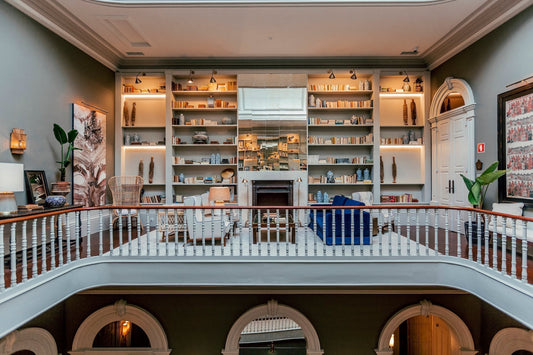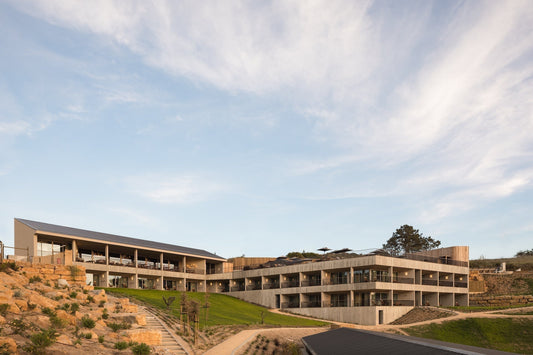KLFW: An Honest Review from a Non-Fashion Critic
By Kerol Izwan
Musotrees is not a fashion magazine, but this week, my thoughts came from the fabric up: ideas turned into uplifted, wearable pieces that speak to different generations, categories, lovers, and haters alike. Fashion is, after all, the art of turning ideas into something tangible.
I was lucky to witness the Kuala Lumpur fashion scene in full swing at KL Fashion Week 2025. Held at the KLCC Esplanade, the mall transformed into a fashion frenzy, ironically a runway in itself. Guests arrived by LRT or car, navigated escalators with bemused shoppers, and strode from atrium to atrium in unapologetic, purpose-driven style to catch their favourite designers. A profitable week for the mall, I must add, especially for the restaurant next to the runway — the perfect pre-show meeting point (or quick bite if you’re too lazy to queue) before your QR code is scanned.

KLFW, aka the Malaysian Met Gala (minus the outrageous celebrity drama, plus a lot more humidity), has been strutting strong for over a decade, and this year’s edition once again put the spotlight on both rising stars and established names. Traditional? Check. Modern? Check. Pieces you’d wear to the grocery store? Also check. And for those of us who don’t own a single couture gown (hi, that’s me), KLFW is still an experience worth showing up for — partly for the clothes, mostly for the people-watching.
I attended five shows this year, from promising newcomers to OGs of the industry, a well-rounded snapshot of the week. So here it is: my unfiltered, mildly underqualified opinions. No jargon, no pretension, just one curious spectator’s take on the spectacle.
1. Mimpikita + Kita & Co.: Sisterhood of the Travelling Really Good Outfits
We kick off with Mimpikita (MK) and its sister brand Kita & Co., a duo so in sync it’s almost unfair. This year, they joined forces for a show that felt like a family reunion, the stylish kind, where everyone’s in a different outfit but still looks like they belong in the same glossy magazine spread.
Usually, Kita & Co. plays in the womenswear space, but this year they made a confident leap into men’s and unisex pieces. And yes, I would wear them. (Not just in my head — in real life. Hold me to it.)
The collection, Timelapse, is a love letter to change: dawn to daylight, spring to summer, memory to presence. Each piece captures the grace of impermanence, like a beautiful moment you can’t quite hold onto, so you wear it instead. On the runway, creative director Nurul Zulkifli served everything from sleek silhouettes to flirty fringes, pleats, and netting.
The Mimpikita DNA was loud and clear: playful details, smart fabric choices, and that elusive “effortless but put-together” energy. It’s like dressing three sisters with wildly different personalities — Nurul, Mira, and Syera — yet somehow everything works together.
Twenty-nine looks later, the takeaway was simple: Mimpikita isn’t afraid to evolve, but they’ll never lose themselves in the process. Bold colors, bold techniques, and bold confidence, they’ve packed it all in.
> See all collections here.
2. TACT Airport: Where Boarding Pass Meets Front Row
If airports looked this good, I’d show up three hours early just to people-watch. TACT Airport doesn’t just present clothes, they stage a full-blown departure experience. The runway became a boarding gate, and we, the audience, were ready to check in for a first-class ride.
The brand is the brainchild of Ridduan Ismail, better known in the scene as prolific fashion photographer TTFGA, and his partner Hadri Hashim, an entrepreneur and model. Together, they founded the model agency Topboi Citizen, and honestly, what better way to stir up the fashion game than by launching their own clothing line? A genius move, served with style.
Each piece from TACT shows a clear understanding of what both men and women should wear, refined details, spot-on colours, and just the right balance between statement and simplicity. Think sage green sleeveless suits, oversized yet structured trench coats, satin shimmer for a hint of drama, pleated trousers that instantly sharpen the look, and co-ord sets that feel like instant style insurance. Oh, and yes — there was that tee with shorts-meets-long-pants situation (are we calling them jorts now?).
The colour palette was fresh yet grounded: soft sage greens, neutrals from crisp white to warm taupe, grey sweatshirts, a pop of baby blue, and deep navy for contrast — all varied but still effortlessly cohesive. Accessories weren’t just add-ons, they were part of the itinerary: structured bags, belts with purpose, and sunglasses that say, “Yes, I am that important.”
Every model looked fashionably late to the runway, no pun intended, serving the exact energy you’d expect from someone boarding a private jet in style.
Some designers transport you with fantasy. TACT Airport books you a ticket and sends you straight there.
> See all collections here.
3. Ezzati Amira: Suara — A Quiet Power That Speaks Volumes
Ezzati Amira is a woman with a vision, both literally and in design. This year, she made her KLFW comeback with Suara (translated: “voice”), a collection that whispered and roared at the same time. Her message was clear: she’s raising the bar, and she knows it.
“Suara” felt like a masterclass in subtle luxury, the kind that doesn’t shout for attention but still turns heads. The maturity in her work is undeniable; there’s a confidence in every structured silhouette, a polish in every seam. She kept her signature edge but wasn’t afraid to play — a restrained palette with muted tones, unexpectedly lifted by a soft ombré, showed she can still surprise her audience without breaking character.
For me, the real translation of Suara was this: clothes that make you feel powerful without screaming about it. Women and men alike walked out looking like they had already reserved their next promotion, dinner table, or maybe even a seat in parliament. The show carried a quiet thrill — like a whispered “I’ve already got this” — that buzzed through the crowd.
Bold yet restrained, experimental yet cohesive, Suara proved that Ezzati Amira knows exactly how powerful her voice is, and she’s not done speaking.
> See all collections here.
4. Huntilanak: Folklore, but Make It Fashion
Some designers flirt with drama; Huntilanak takes it out for dinner, locks eyes, and never lets go. Drawing its name from Southeast Asian folklore — the ghostly femme fatale you don’t want to meet in a dark alley — this label brought a deliciously eerie energy to KLFW. And somehow, it worked.
Huntilanak is the creation of designer Royan Yen, with artist Silas Jpeg collaborating on the show’s distinctive visual direction. Silas described the collection as a way of “recreating some of my past abstract material works into wearable form” — translating flayed flesh, fungi spores, fossil sediment, and even a mouldy mandarin into textures and tones you could actually step out in. It’s grotesque, but in that oddly beautiful way only high fashion can pull off.
The collection felt like high fashion with a supernatural wink: sweeping silhouettes, rich dark fabrics, sharp tailoring softened with unexpected textures, and details that hinted at something… otherworldly. There was romance, yes, but with a dangerous undertone — the kind that makes you lean in closer instead of stepping back.
Colours stayed on the moodier end of the spectrum — deep blacks, blood reds, shadowy purples — but were elevated with clever plays of light-catching materials. Some looks carried a ceremonial weight, while others whispered modern gothic chic, proving Huntilanak can haunt both the runway and your day-to-day wardrobe.
It’s not often you get a collection that feels like a ghost story and a style manual. But Huntilanak managed to turn the supernatural into something seductively wearable. A haunting, in the best possible way.
> See all collections here.
5. AirAsia Presents “Design to Sustain”: Three Designers, One Runway, Endless Legroom for Creativity
When AirAsia says Design to Sustain, they’re not just talking about their fuel efficiency — they’re talking about fashion that actually goes the distance. The airline sponsored a triple-feature runway this year, spotlighting three designers with wildly different styles but a shared goal: proving that sustainability can look like more than just beige linen and a halo of moral superiority.
Raja Irfan brought sharp, contemporary tailoring with an almost architectural feel — think crisp lines, purposeful cuts, and silhouettes that could walk straight into a boardroom or a rooftop party without breaking a sweat. His work felt confident, precise, and refreshingly modern, proving sustainable fashion can still come with a killer fit.
Mei Mei leaned into a softer, more romantic interpretation. Her pieces floated down the runway in light, fluid fabrics and muted, nature-inspired tones — sustainable and poetic. There’s a certain quiet magic in her work, the kind that makes you forget you’re looking at recycled materials because you’re too busy sighing over the drape of a sleeve.
Salahuddin Hilmi, on the other hand, went bold and street-ready. His looks had a lived-in coolness, blending upcycled elements with clever layering, a touch of deconstruction, and a strong sense of personality. It was the kind of styling that made you want to raid your own closet and start mixing things up immediately.
The best part? The trio’s collections worked together without blending into one another. It was like being on the same AirAsia flight but in very different seats — business, premium, and hot seat — each with its own perks, all getting you to the same stylish destination.
> See all collections here.



